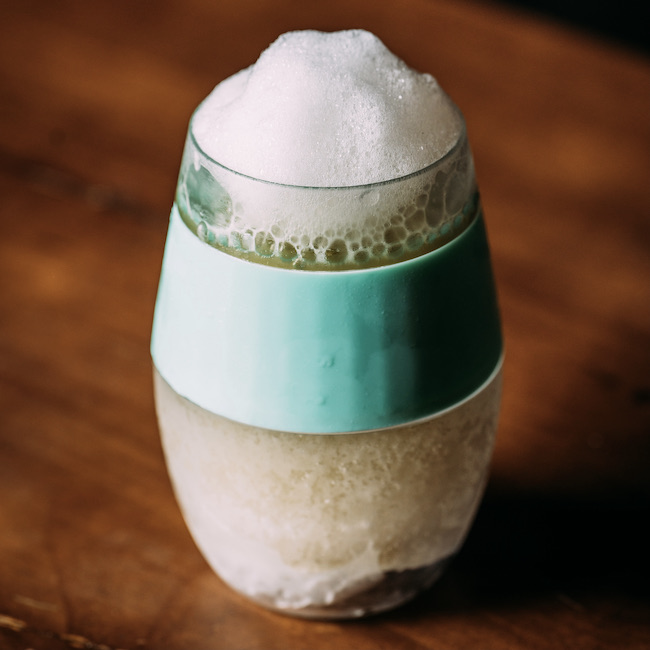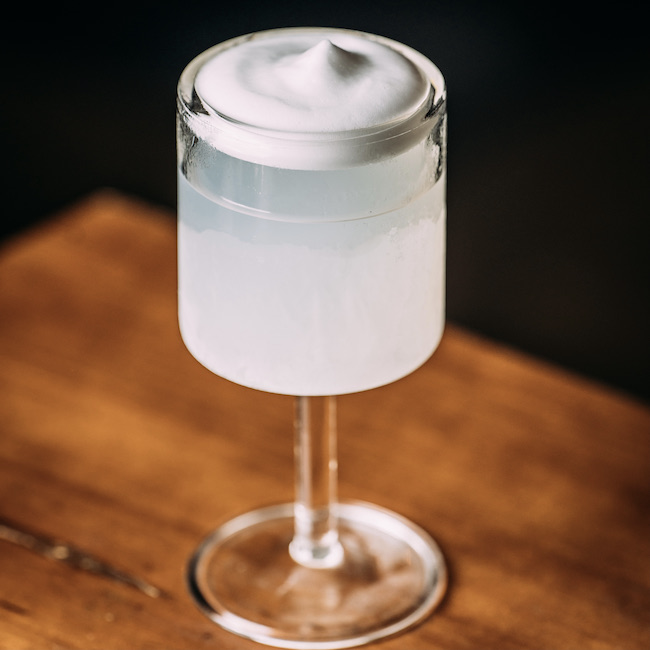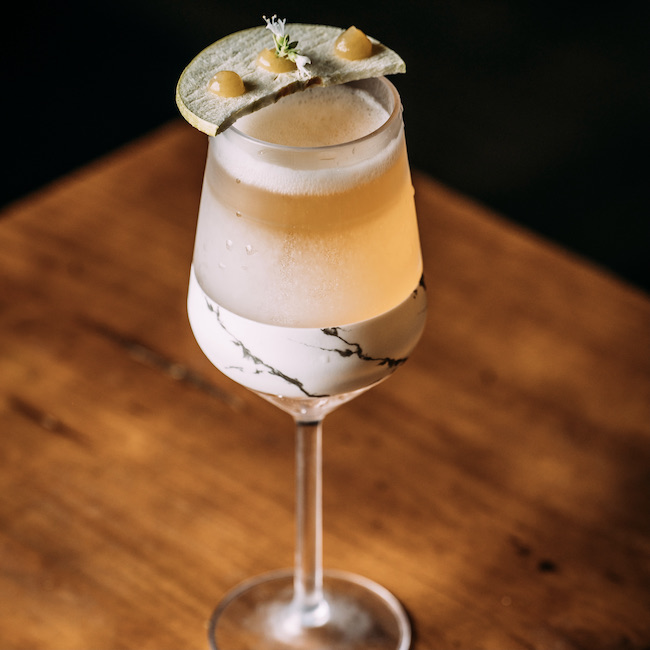.png.transform/rendition-xs/image_image%20(1).png)
Dry January? We've Got you Covered With These Mocktails
In January, after holiday excesses, many people many choose to forgo alcohol. We asked one of our most prestigious bartenders to propose cocktails that don't contain a drop of alcohol
A few years ago, someone invented Dry January, a movement that encourages people not to drink alcohol during the month to compensate for excess drinking that usually occurs during the holiday season in December.
In addition to Dry January (which many people participate in each year), there are also teetotalers. For years, mocktails have been a good alternative to cater to this group: these beverages are as elaborate as regular cocktails, but they don't contain alcohol. All the great bartenders in the world have some mocktails on their menus.
In Spain, one of the most prominent figures in the new generation of cocktail makers is Mario Villalón, from cocktail bar-restaurant Angelita, in Madrid. Angelita Madrid is currently ranked number 30 on the Top 500 Bars list. On their latest menu, Bebidas vivas, they offer 14 new cocktails, each of them related to a plant, which are seen as living beings and efforts are made to make the most of each part, with minimum intervention. All the ingredients are sourced locally, which allows them to highlight products from the family garden in Zamora (Castile-León) and from the nearby mountains of Madrid.
When it comes to fruit and vegetables, Spain has plenty to choose from. It's the EU's top producer and is responsible for more than 25% of European production, as well as the seventh-leading producer worldwide. Spanish fruit and vegetable production exceeded 25.3 million tons in 2022.
Villalón has created three non-alcohol cocktails that pay homage to three important parts of Spain's fruit and vegetable landscape: La Tomatera (the tomato plant), el manzano (apple tree) and el limonero (lemon tree). "We bottled them. We keep the non-alcohol cocktails carbonated. This way, the soda expels the oxygen and the drinks oxidizes less, and they are bottled individually so that the cocktails are always like ready-made and very fresh," Villalón explains.
Three mocktails to start the year. By Angelita Madrid

LA TOMATERA
1) green tomato water and piparra (guindilla pepper from the Basque Country) cordial
2) non-alcoholic distillate of tomato and piparra
3) sage soda
4) tomato leaf air
In this Moscow mule-style drink, we clarify green tomatoes (they're out of season and they don't ripen, so we use them when they're green). With the solid parts, we make a non-alcoholic liquor and with the water we make a cordial. Add the sage soda. With use the leaves of the plant to make an air, which we place on top.
"For La Tomatera we use a single variety beefsteak tomato, homegrown, which we produce in our orchard in the village of Litos, in the area surrounding the Sierra de la Culebra national park (Zamora, Castile-León)."

EL MANZANO
1) wild apple water
2) jasmine soda
A long and refreshing drink where we roast wild cider apples and then extract the juice by steaming them. A touch of jasmine flower concentrate in the soda, we finish with a freeze-dried Granny Smith apple, using pieces of the apple, and an aromatic leaf.
“For El Manzano are wild apples that we pick around the orchard we have in Litos. Beside it there's a small stream, and nearby there's a lot of wild pears and apples."

EL LIMONERO
1) cold lemon peel cordial
2) clarified lemon juice
3) citronella soda
4) sweet and sour citrus foam
For gin and tonic fans, we prepare a cordial from the cold extraction of lemon peel oils and Thai basil flowers (which are more mentholated than Genovese or Greek basil), which we mix with clarified lemon juice and citronella soda. We finish the highball with a sweet and sour lemon and basil foam topped with a basil sprout.
"We use lemons from Murcia in summer, but for the last few weeks we have been planting tiny lemon trees in our own orchard. The tree isn't very big, no more than 1.80 meters tall, and it yields tiny lemons. They're the ones we're using at the moment and we're very happy."
These mocktails could be made using fruit from other the PGIs in Spain. In the case of tomatoes, for example, Spain is home to Tomate de La Cañada PGI; the production area is in the province of Almería. Speaking of apples, it's also worth highlighting the Manzana Reineta del Bierzo PDO (Castile-León), which are green apples with no shine and the typical surface russeting. There's also the Manzana de Girona/Poma de Girona PGI, which includes varieties such as Red Delicious, Granny Smith, Golden, and Gala. And, finally, lemons also have a PGI (Cítricos Valencianos), which they share with oranges and mandarins produced in the Valencia region.

